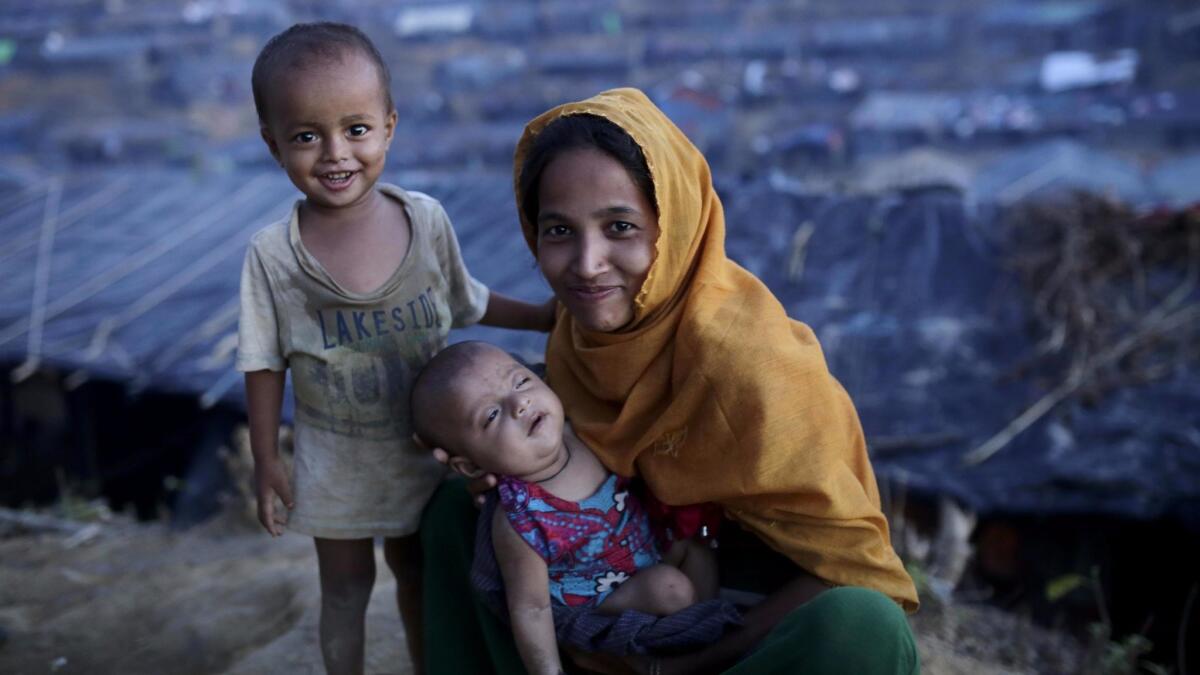Editorial: Amidst the worst refugee crisis in history, Trump would be heartless to turn away the desperate

- Share via
War, political instability and persecution around the globe have sent more people – about 66 million – running for their lives than at any other time in modern history, surpassing even the upheaval of World War II. The number, though, obscures the scope of the human drama — masses of people of all ages seeking distant shores in unseaworthy boats, trekking across deserts or jungles to reach dusty and overcrowded tent colonies or, for the lucky, squatting uncertainly in apartments in strange cities, their futures at best on hold, at worst already disappearing.
Despite the growing accumulation of human misery, the Trump administration is reportedly considering an even more cold-hearted response: reducing for the second straight year the number of refugees the U.S. will accept annually for permanent resettlement. To do so would be a further repudiation of the nation’s moral tradition of offering a haven to those who have no chance of a future in their home countries.
The number of displaced people the U.S. accepts for resettlement has fluctuated wildly over the years, rising or falling with the global tide of disaster and political instability. President Obama initially lowered the ceiling to 70,000 , but last year increased it to 110,000 in response to the humanitarian crisis around the Mediterranean Sea. (That’s not a hard cap; close relatives of the resettled often can be admitted, too.) President Trump, though, almost immediately cut the cap to 50,000, and now some in his administration want to lower it to 40,000 or fewer in the fiscal year beginning Oct. 1.
Resettling refugees has, unfortunately, become conflated in the minds of many with overall immigration policy, which grants legal permanent resident status to more than 1 million people a year. And while it involves immigration, resettling refugees is more than that. It’s an act of mercy, and the U.S. has historically led the world in giving the most desperate of the displaced an opportunity to build a permanent new home.
Under the process, the United Nations High Commissioner for Refugees determines that certain displaced people have no reasonable expectation of returning to their native lands. After an extended vetting process, the UNHCR refers individual refugees to a country in which it believes the refugees stand the best chance of success. Refugees referred to the U.S. are then vetted again by the State Department and Department of Homeland Security; none of the 3 million refugees resettled in the U.S. since 1980 has killed anyone here in an act of terror.
Even those people who believe that we should tighten up the border and reduce legal and illegal immigration ought to stand up for the long-held principle (too often ignored) that America should be a place of refuge for desperate people fleeing persecution. Not all of them, of course, but when the world is confronting a refugee crisis of the current magnitude, we should be opening doors to more of the desperate, not fewer.
Follow the Opinion section on Twitter @latimesopinion or Facebook
More to Read
A cure for the common opinion
Get thought-provoking perspectives with our weekly newsletter.
You may occasionally receive promotional content from the Los Angeles Times.









